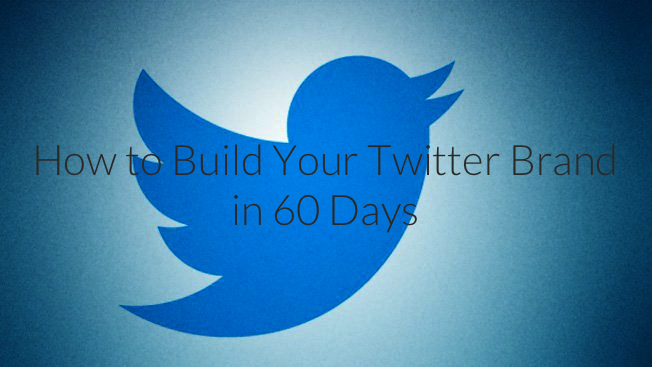The Google panda and penguin updates both shook the SEO industry. Intended to identify sites that provide spun articles, Google Panda and Google Penguin scanned the whole web, punished sites it found have copied or irrelevant content by pulling down their search rankings and/or suspending the sites Google AdSense accounts.
However, these two Google soldiers have different functions and if your site is to survive and triumph, you need to understand how each functions differently but complementary.
1. The Difference Between Google’s Panda and Penguin Updates
The Panda update focused on ensuring that sites that are given high SERPs are actually relevant to the search in question. Panda introduced algorithms that assess signals such as the bounce rate of a page, the clickthrough rates (CTR), the amount of content above the fold (i.e. the first thing you see when you load a page), and the number of clicks a page gets in results. One key thing about panda – and what a lot of webmasters fear – is that it no longer demotes low quality pages. Rather, it can demote the entire domain if there are a few low quality pages within it.
Penguin, on the other hand, penalizes what Google refers to as “over-optimisation”. It affects a lot of off-site work, such as poor quality backlinks, as well as a few design practices. It penalizes sites poor quality content, which are usually used to farm backlinks. In order to avoid being flagged by the penguin update, you need to include not only a large amount of text in pages that you want to rank, it should also contain contents that are unique, relevant, grammatically correct, and timely.
2. Complement Main Images
One of the image-related algorithm changes featured in Panda is that it places a lot of importance in sites that have content above the fold instead of ads. This runs counter to a lot of sites that use the topmost part of a website for images (as it makes sense from a design perspective, since it’s easier to catch people’s attention with images than text). If your site has an image above the fold, try to add text that will complement it, just to give the search engine something to associate with the image. A simple textbox with on-topic text will work wonders.
3. Considered Content
Keyword density is no longer as important as it used to be. That’s right. Google was clear that they changed their algorithm in a way that will no longer give “points” to the number of times a keyword appears, where it is positioned, and whether or not you used it in your subheads. Google said they are more concerned about the content and context of the content.
4. Plagiarized Content
Google has always disliked duplicate and plagiarized content, but the recent updates further tightens their already strict policy against duping content. You don’t have to copy the words of another site to be punished. If your site becomes notorious for having “similar contents” with other sites, you will be punished. You need to be unique.
5. Click Through Rates
Google now tracks the number of pages that a user clicks within the domain before leaving or returning to the results page, and uses it as an indicator of relevance. Webmasters should make a habit out of linking to relevant pages within their own sites. Don’t simply link pages just for the sake of encouraging a click through. Make sure there’s a natural flow of information to a need for more information.
6. Dwell time
Google’s PPC services already considers dwell time as a quality signal. Dwell time is basically the average amount of time spent on a page after the clickthrough. The longer the dwell time, the more relevant a site looks to Google.
7. Dwell Techniques
Now that the bounce rate is an important signal in Panda, dwell lengthening techniques or practices are starting to make their way into SEO site design recommendations. For instance, incorporating a slide show or a 30 second video clip engages a visitor for a long time while keeping them in the same page much longer than text would.
8. Grammar and Spelling
This is somewhat of a complicated thing. We don’t know any website that has openly admitted to falling in rankings due to grammar and spelling mistakes in their content. But it’s also considered good practice to ensure that your site is copy-proofed thoroughly. The recent Panda update factor in the grammar and spelling mistakes in the site, but not as strictly. It’s probably just to ensure that they catch sites made up of content that was taken from other sites and ran through a translator or spinner.
9. Anchor Text
Anchor text should not be used to indicate topic or targeted keywords. Rather, you should ensure that it’s directly connected to the link it points through. For example, instead of just “web design tips” as anchor, use “wbdesignDOTcom’s web design tips.” This will ensure that you provide proper accreditation to the sites you are linking to.
10. Embedding Content
If your site has an “embed this/link this” function, make sure that the anchor text it supplies will comply with the #9 tip above. One thing to watch out for is that if your site is huge, the embed links you provide may start looking like each other and may be misconstrued by Google as spam.
At the end of the day, Google’s Panda and Penguin updates doesn’t seem to shake things that much for sites that follow ethical and standard practices. The only ones that need to worry are sites who deliberately try to game the search engine instead of prioritizing user experience.
[et_social_share]








Douglas,
Intersting post, but I am interested to hear more about how you believe Panda introduced algos for bounce rate, do you have any references for where you get this information from?
Eager to here back from you.
Jonny
@jrconsultancy
Thanks Johny. Here’s a link for you. However, note Google will not reveal its complete algos: http://googlewebmastercentral.blogspot.ca/2011/05/more-guidance-on-building-high-quality.html
Hi Douglas
Thanks for explaining the Google Panda and Penguin updates.
I had no idea about directly connecting Anchor Texts so I will definitely take that on board.
I do also try and link to relevant pages within my blog and I will make sure I do this more often but in a measured way.
Thank you for sharing.
Tim
So what spelling, grammar and punctuation rules is Google using?
Proper English or the lobotomized American version of English?
There are vast differences between the two.
Google Fast Flip was an online news aggregator from Google Inc. that mimicked the experience of flicking through a newspaper or magazine, allowing visual
I simply want to tell you that I am newbie to blogging and definitely loved you’re web site. Most likely I’m want to bookmark your blog . You really have really good articles. Thanks a bunch for sharing with us your blog site.
I tried taking a look at your web site on my ipod touch and the design does not seem to be right. Might wanna check it out on WAP as well as it seems most cellphone layouts are not working with your website.
Just discovered this blog through Yahoo, what a pleasant surprise!
Whenever I at first left a comment I clicked the Notify me whenever new comments are added checkbox and now each time a comment is added I get four emails with the exact same comment.
You ought to really moderate the commentary listed here
This is really a fantastic website, could you be interested in going through an interview regarding just how you made it? If so e-mail me!
Just discovered this blog through Bing, what a pleasant surprise!
This website is really cool. How did you make it !?
I appreciate, lead to I found exactly what I was taking a look for. You’ve ended my four day long hunt! God Bless you man. Have a great day. Bye
Have you considered including several social bookmarking buttons to these sites. At least for flickr.
Nice post . Thanks for, visiting this blog page dude! I will message you some time. I did not realise that.
This website has got some really helpful info on it. Thank you for sharing it with me!
I was wanting to know if you ever thought of replacing the layout of your web site? It is well written; I enjoy what youve got to say. But maybe you could add a little more in the way of content so people can connect with it better. Youve got an awful lot of wording for only having one or two photos. Maybe you could space it out better?
An insightful blog post right there mate . Cheers for that !
It appears to me that this website doesnt download on a Motorola Droid. Are other folks having the same problem? I enjoy this webpage and dont want to have to skip it when Im gone from my computer.
I had been curious about if you ever considered modifying the design of your web site? Its well written; I enjoy what youve got to say. But maybe you can add a a bit more in the way of content so people could connect with it better. Youve got an awful lot of text for only having one or two pictures. Maybe you can space it out better?
Great Stuff, do you have a youtube account?
Just to let you know your web page looks a little bit unusual on Firefox on my laptop using Linux .
You ought to really control the remarks listed here
Ways To Grow Hair Efficiently And Also The Fastest Way Attainable
Pure Hair Growth- Simple Tactics To Grow Long Hair Medicines
Is it alright to insert part of this on my blog if I submit a reference point to this web site?